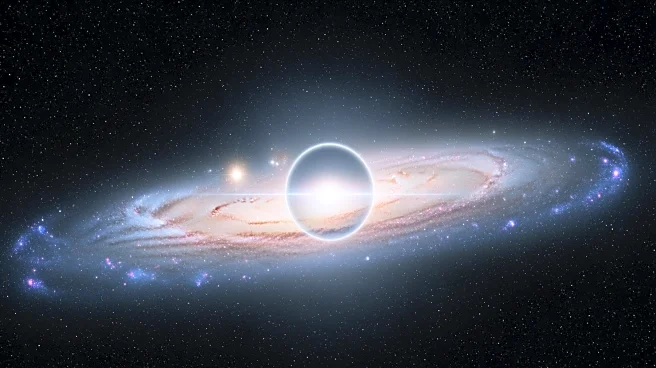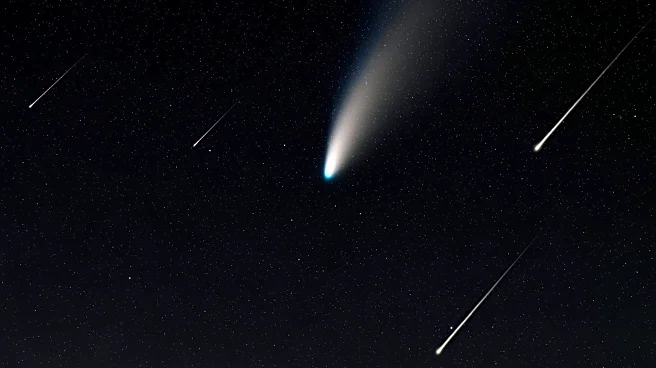What's Happening?
Astronomers have identified a super-Earth exoplanet named GJ 251c, located 18.2 light-years away in the constellation of Gemini. This planet, which is four times the mass of Earth, resides in the habitable
zone of its red dwarf star, making it a prime candidate for the search for extraterrestrial life. The discovery was made through observations spanning over 20 years, utilizing the Doppler shift in the star's radial velocity caused by the planet's gravitational pull. The Habitable-Zone Planet Finder and NEID spectrograph were instrumental in confirming the planet's existence. While the presence of an atmosphere or life on GJ 251c is yet to be confirmed, it represents a promising target for future exploration.
Why It's Important?
The discovery of GJ 251c is significant as it adds to the list of potentially habitable exoplanets, offering a new target for the search for life beyond Earth. The planet's location in the habitable zone suggests conditions may be suitable for liquid water, a key ingredient for life. This finding could influence future astronomical research and the development of new technologies aimed at detecting biosignatures. The study of such exoplanets is crucial for understanding the potential for life in the universe and could have implications for astrobiology and planetary science.
What's Next?
Future observations are planned to further investigate GJ 251c, although current technology like the James Webb Space Telescope may not be able to detect its atmosphere. The next generation of telescopes, including the planned Habitable Worlds Observatory, could provide more detailed insights into the planet's characteristics. Researchers aim to determine whether GJ 251c has a thick atmosphere and strong magnetic field, which could protect it from the star's flares. These efforts will be crucial in assessing the planet's habitability and potential for hosting life.
Beyond the Headlines
The discovery of GJ 251c raises questions about the habitability of planets orbiting red dwarfs, which are known for their volatile nature. While GJ 251c's distance from its star might shield it from harmful flares, the long-term sustainability of its atmosphere remains uncertain. This finding contributes to the ongoing debate about the viability of life on planets around red dwarfs, challenging assumptions and prompting further research into planetary protection mechanisms.











